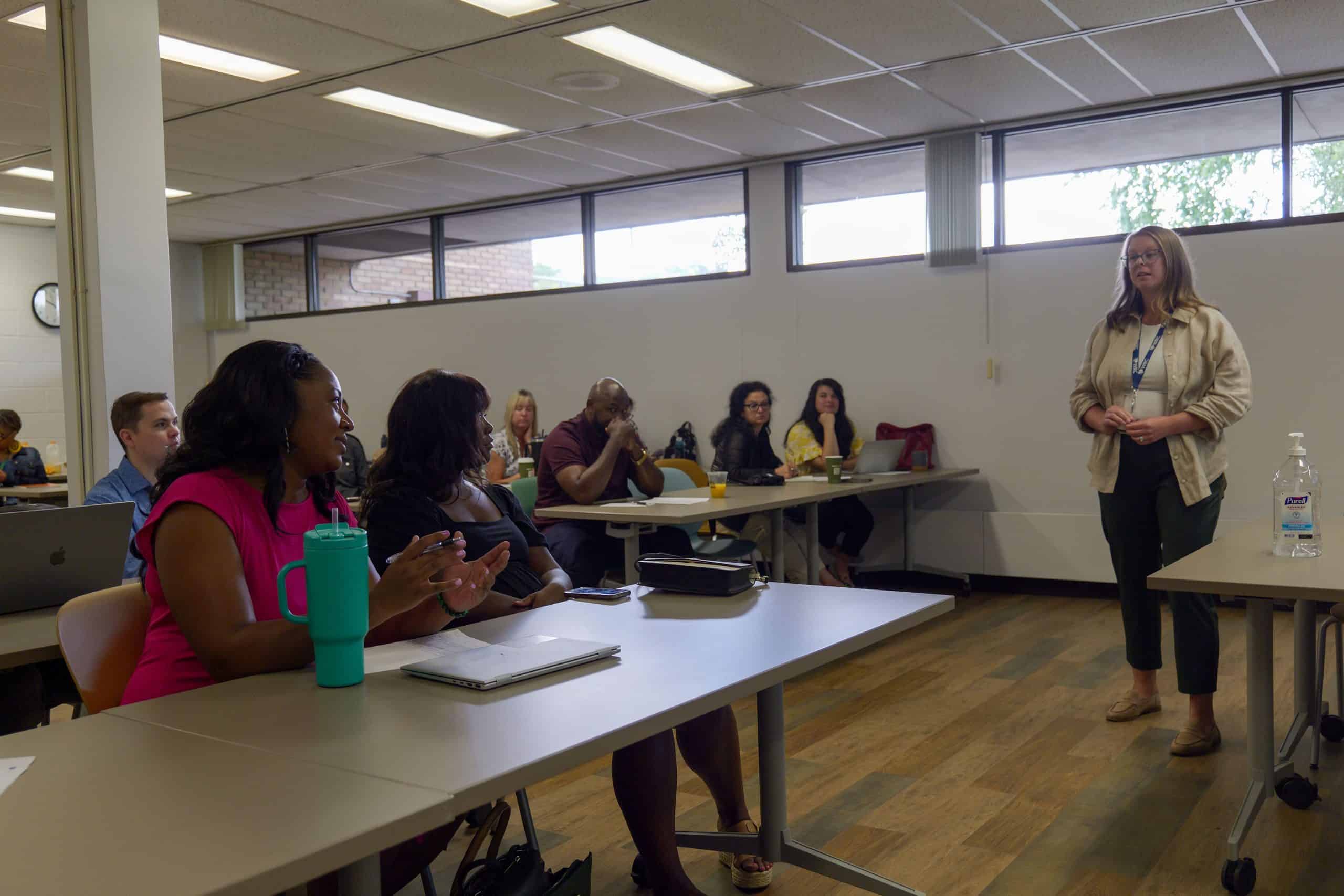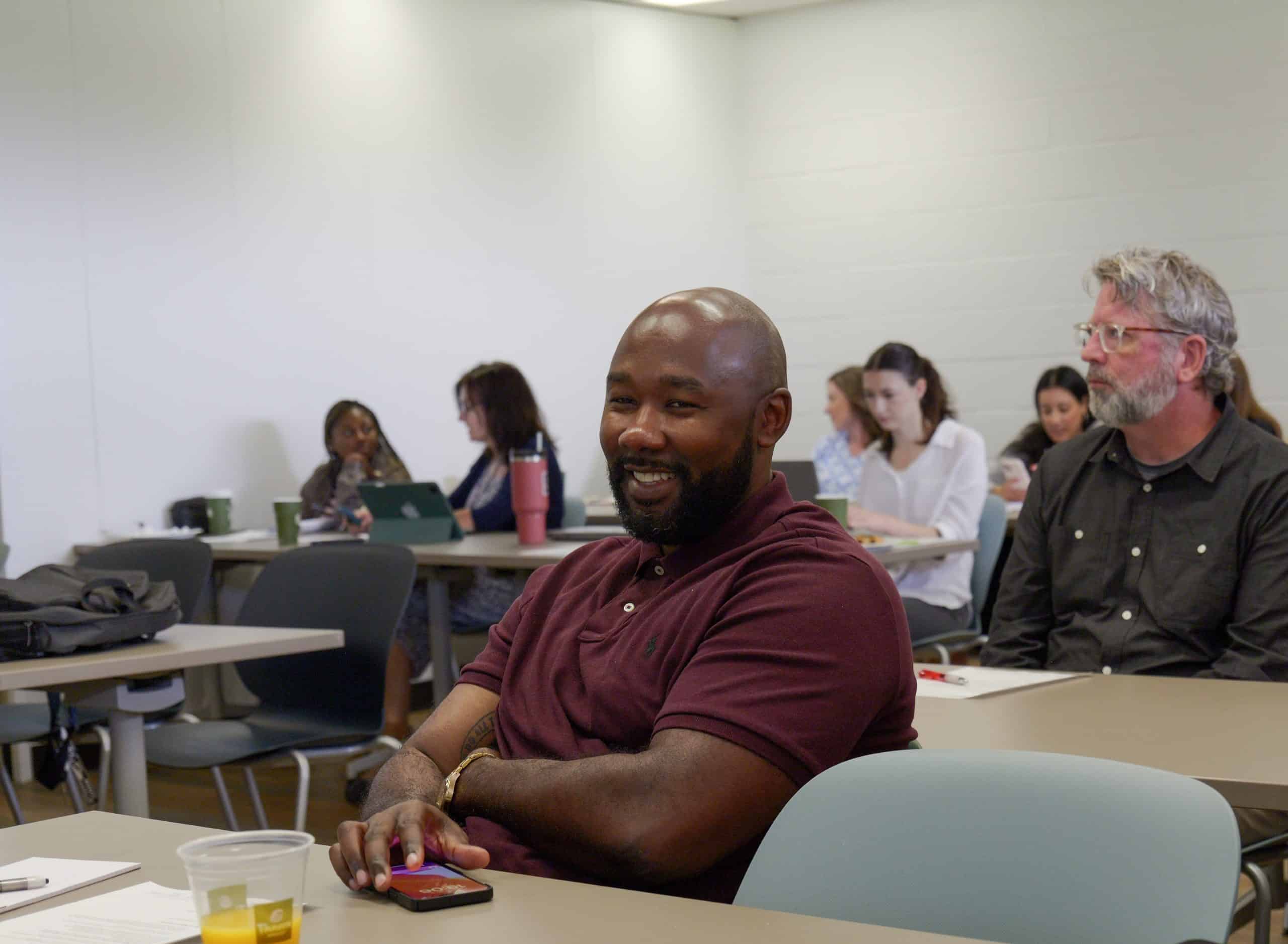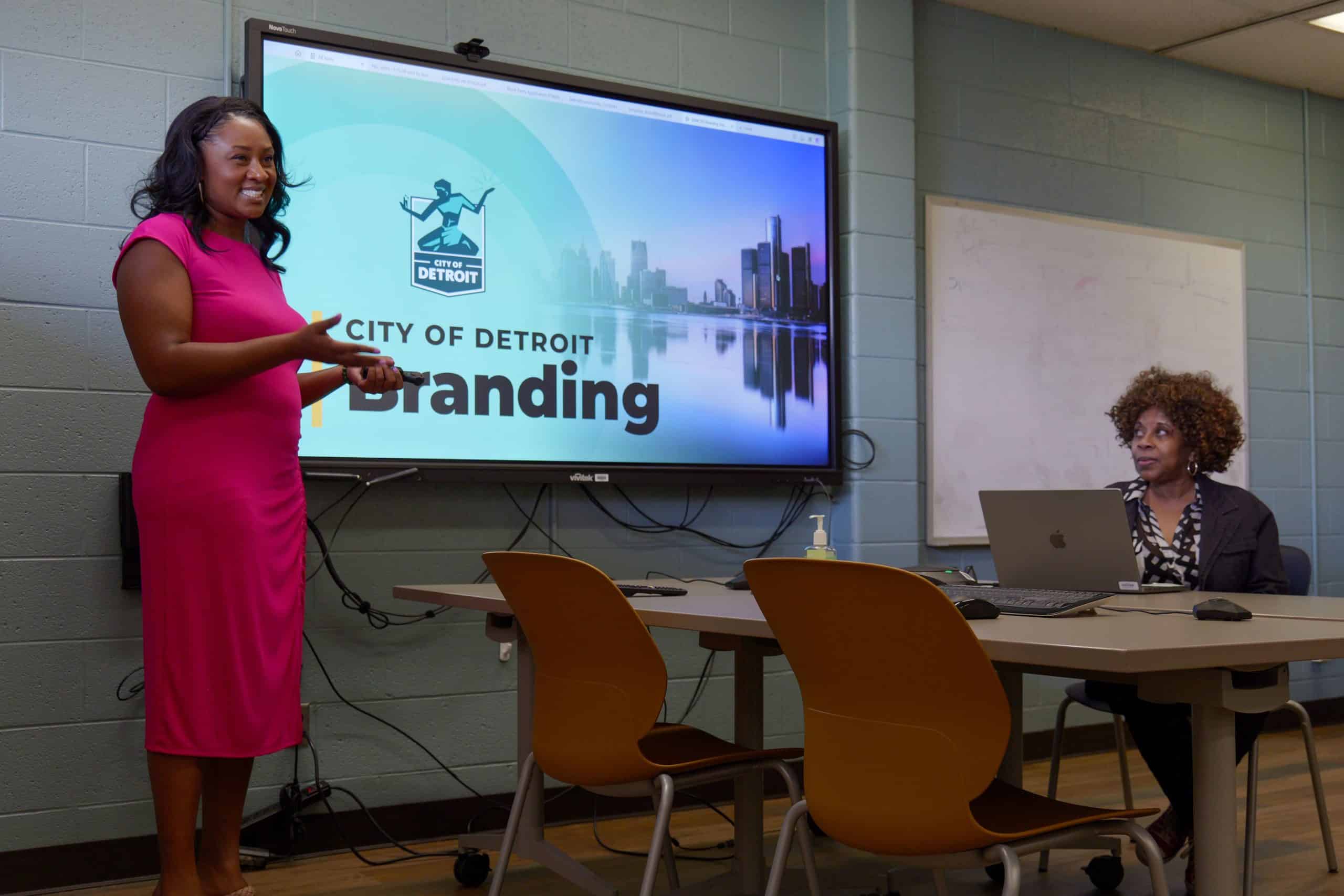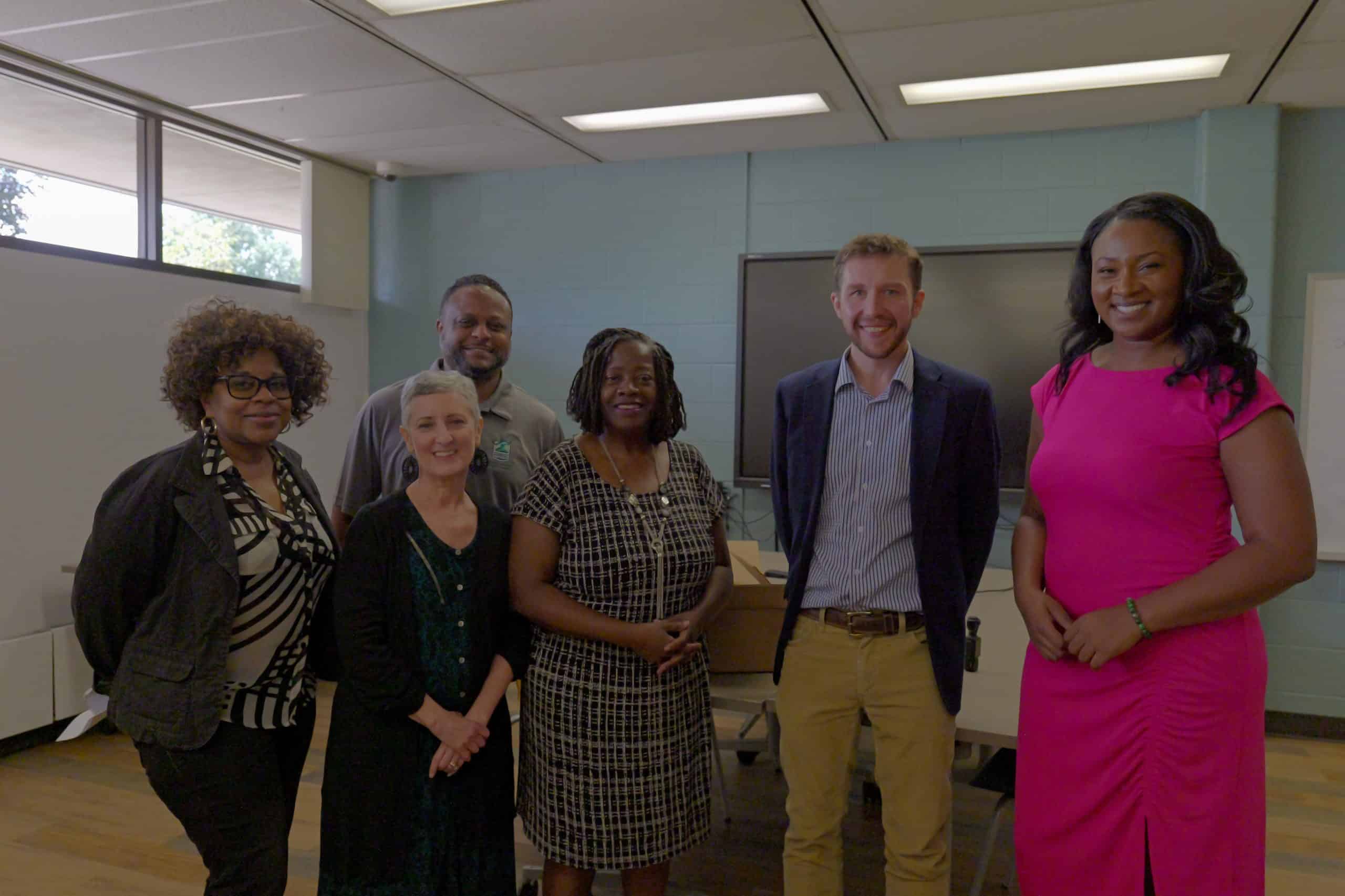Photo credits: All images from the event are courtesy of the Oakland County Water Resources Commissioner’s Office.
On July 18, 2024, the Southeast Michigan Communicators Network convened for an in-person quarterly meeting hosted by the Oakland County Water Resources Commissioner’s Office. We extend a special thank you to Oakland County for their generous hospitality and valuable insights shared during the event. Our gratitude also goes to City of Detroit Media Services for their thorough session on style guides.
With four dozen local government leaders and communicators in attendance, the meeting was rich with valuable insights and actionable strategies from expert presenters. Here’s a recap of the day’s discussions and takeaways, which focused on effective social media practices, the creation and implementation of brand standards, and updates on regional communication initiatives.
Effective Messaging on Social Media

Presenter: Trisha Bruzek, Marketing and Communications Officer, Oakland County Water Resources Commissioner’s Office
Our meeting kicked off with a presentation from Trisha Bruzek, Marketing and Communications Officer at the Oakland County Water Resources Commissioner’s Office. In Effective Messaging on Social Media, she explored the intricacies of social media management and best practices, offering a wealth of knowledge for building a successful social media strategy. Here are the key highlights from her presentation:
1. Building a Solid Social Media Strategy
Trisha emphasized the importance of having a well-defined goal, which is tailored for your target audience. She shared that creating engaging content involves a blend of photos, videos, and clear calls to action. To optimize engagement, she recommended:
- Planning and scheduling posts: Use tools like Hootsuite to automate and plan content in advance.
- Understanding your audience: Post during peak times when your audience is most active.
- Consistent scheduling: Regular updates help build anticipation and engagement among followers.
2. Engaging Your Audience
Engagement was a focal point of Trisha’s discussion. She advocated for responding to comments and messages within 24 hours and being an active participant in conversations. Establishing clear rules of engagement was also crucial for managing positive interactions and less positive interactions.

3. Crafting a Crisis Communication Plan
Trisha underscored the importance of a robust crisis communication plan, which should include:
- Fact-based responses and time-stamped updates.
- Acknowledging the resolution of issues and appreciating the efforts of staff.
4. Best Practices and Techniques
Trisha shared several best practices:
- Connect with different departments and capture the unseen aspects of your work.
- Embrace diversity and inclusivity in your content.
- Ensure legal compliance, such as using proper safety measures for field staff and archiving social media content according to strict guidelines.
Crafting a Style Guide

Allysa Cole, Communications Manager for Human Resources, City of Detroit
Following Trisha’s presentation, Allysa Cole, Communications Manager for Human Resources at the City of Detroit, introduced the City of Detroit Media Services team to present Making a Style Guide: What Are the Necessities for Your Organization? Led by Rose Love, Communications Manager, Antone Amye, Graphic Designer, and Nancy Cohen, Graphic Designer, this presentation was a deep dive into the creation and enforcement of a style guide, a crucial tool for maintaining brand consistency across various communication channels.
1. Developing a Comprehensive Style Guide
The team emphasized that a well-crafted style guide should:
- Promote brand identity through consistent use of logos, colors, and messaging.
- Include practical examples of dos and don’ts to guide employees, from billboards to presentation.
- Foster brand advocacy within the organization to ensure that all content reflects the city’s values and image.

Left to right: Antone Amye, Graphic Designer, Nancy Cohen, Graphic Designer, Rose Love, Communications Manager, all with the City of Detroit Media Services
2. Enforcing the Style Guide
To ensure adherence to the style guide, the team suggested:
- Providing easy-to-access resources for employees, such as a downloadable PDF or a dedicated section on the intranet.
- Using a request form for design services, with a clear process for submission and review.
- Conducting focus groups and interviews to refine and update the guide as needed.
3. Showcasing Brand Consistency
The team illustrated how to achieve brand consistency through:
- Visual examples of effective brand expression across various media.
- Highlighting the evolution of the “Spirit of Detroit” logo and its role in the city’s branding efforts.
SEMCOG’s Regional Communication Initiatives

The final session was presented by Trevor Layton, Communications Manager for SEMCOG. Trevor provided updates on several regional initiatives.
1. Regional Transportation Plan
Trevor discussed the recent adoption the Vision 2050: Regional Transportation Plan for Southeast Michigan, a comprehensive $38 billion strategy to guide transportation investments through 2050. Developed with extensive community and partner input, Vision 2050 addresses future mobility, infrastructure needs, and environmental sustainability. The plan includes:
- Investment Priorities: Focus on infrastructure, transit, congestion management, and more.
- Strategic Goals: Improve transportation quality, safety, and sustainability while fostering economic growth and regional connectivity.
2. One Water and Safe Streets Public Education Campaigns
Trevor reviewed SEMCOG’s public education efforts for 2024, including:
- Safe Streets Campaign: Launched in 2018, this campaign aims to promote transportation safety through educational content. This spring and summer, it distributed over 240 educational bundles and generated millions of impressions via TV, social media, and streaming platforms. A new video, “Driving Store PSA,” highlighting the dangers of speeding, will be released in the coming weeks.
- One Water Campaign: Focuses on stormwater, wastewater, and drinking water education. In 2024, the campaign has already distributed over 80 educational bundles and plans to distribute an additional 90 bundles in the next couple of weeks, with millions of impressions achieved through various media channels. The campaign emphasized a resilient water system and stormwater management tips, with ongoing support from regional leaders including the Great Lakes Water Authority (GLWA).
3. Air Quality Initiatives
Trevor shared updates on SEMCOG’s Air Quality Initiatives.
In partnership with the Michigan Department of Environment, Great Lakes, and Energy (EGLE), SEMCOG has transitioned from “Ozone Action” Days to a two-tiered system of Air Quality Advisories and Air Quality Alerts. This new system is based on the EPA’s U.S. Air Quality Index (AQI).
The AQI is a scale from 0 to 500 that indicates air pollution levels. Higher values mean higher pollution and more health risks. When AQI exceeds 100, it’s unhealthy, starting with sensitive groups and worsening as it rises. There are six categories, each with a color, to easily gauge the level of health concern in communities.
Air Quality Advisory: Issued when Ozone, PM2.5 or both are expected to reach or exceed the Unhealthy for Sensitive Groups (USG) threshold. Those considered in the “USG” threshold include people with lung disease (such as asthma), children, older adults, people who are active outdoors (including outdoor workers), people with certain genetic variants, and people with diets limited in certain nutrients should reduce prolonged or heavy outdoor exertion. This is aimed to provide awareness for poor air quality, encourage people to limit activities that contribute to poor air quality, and to alert those who are especially sensitive to poor air quality.
Air Quality Alert: Issued when Ozone, PM2.5, or both are expected to reach or exceed the Unhealthy threshold or worse. This alert indicates a higher level of concern as everyone, not just sensitive groups, can be affected by poor air quality.
Advisories and alerts may be issued for PM2.5 throughout the year and ground-level Ozone from March 1 through October 31. Get Notified about Advisories or Alerts.
Conclusion and next meeting

Left to right: Elena Farmer, Nancy Cohen, Antone Amye, Rose Love, Trevor Layton, and Allysa Cole
The Southeast Michigan Communicators Network’s quarterly meeting offered attendees valuable insights into effective social media practices, the creation of impactful style guides, and updates on significant regional initiatives.
Join us virtually on October 1, 2024, from 1:30 – 3:30 p.m. for our next meeting, where we will continue to explore innovative communication strategies and share best practices!

Leave a Reply